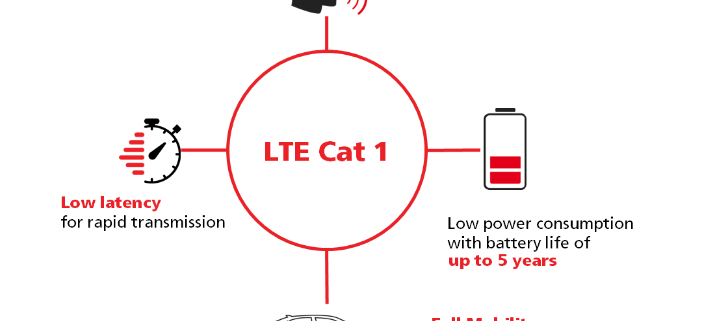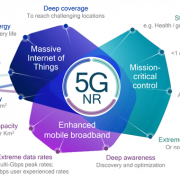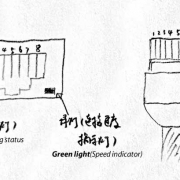Application of 4G LTE cat.1 in the Internet of Things and Security
Now that we have entered the 5G era, it seems a bit out of date to introduce 4G/LTE. However, at the beginning of this year (2020), LTE cat.1 in 4G suddenly became hot, especially since it brought new opportunities to the Internet of Things and security video. Hikvision subsequently launched a lot of 4G network cameras, as if with hindsight, the era of 4G network video surveillance has finally come?
4G, LTE, TDD/FDD and LTE cat. 1
Let’s first look at a few concepts about 4G.
4G, of course, is the fourth-generation mobile communication technology. Compared with 3G, the core of 4G is the increase in network speed. According to the definition of ITU, the static transmission rate can reach 1Gbps, and the user can reach 100Mbps in the state of high-speed movement.
LTE, (Long Term Evolution) long-term evolution technology, is a wireless communication standard formulated by 3GPP. Among them, LTE-Advanced (Long Term Evolution Technology Upgrade, LTE-A) is a 4G standard recognized by the ITU. It is divided into two branches:
- LTE FDD (Frequency Division Duplex Long Term Evolution Technology): The earliest proposed LTE standard. At present, the technology is the most mature, widely used in the world, and has the most types of terminals. Peak rate: 150Mbps downstream and 40Mbps upstream.
- LTE TDD (Time Division Duplex Long Term Evolution Technology): Also known as TD-LTE, it is another branch of LTE. Peak rate: Downlink 100Mbps, uplink 50Mbps.
LTE cat.1 is a type of 3GPP UE (User equipment) category. cat.1 Uplink peak rate: 5.16Mbps, down 10.3Mbps. This uplink speed is sufficient for a single network camera transmission. All 3GPP UE categories are as follows:
| UE CAT | Max. upload rate | Max. download rate | 3GPP RELEASE |
| NB1 | 1.0 | 0.68 | Rel 13 |
| M1 | 1.0 | 1.0 | Rel 13 |
| 0 | 1.0 | 1.0 | Rel 12 |
| 1 | 5.2 | 10.3 | Rel 8 |
| 2 | 25.5 | 51.0 | Rel 8 |
| 3 | 51.0 | 102.0 | Rel 8 |
| 4 | 51.0 | 150.8 | Rel 8 |
| 5 | 75.4 | 299.6 | Rel 8 |
| 6 | 51.0 | 301.5 | Rel 10 |
| 7 | 102.0 | 301.5 | Rel 10 |
| 8 | 1497.8 | 2998.6 | Rel 10 |
| 9 | 51.0 | 452.2 | Rel 11 |
| 10 | 102.0 | 452.2 | Rel 11 |
| 11 | 51.0 | 603.0 | Rel 11 |
| 12 | 102.0 | 603.0 | Rel 11 |
| 13 | 150.0 | 391.7 | Rel 12 |
| 14 | 9585.0 | 391.7 | Rel 12 |
| 15 | 226 | 750 | Rel 12 |
| 16 | n/a | 979 | Rel 12 |
| 17 | n/a | 25065 | Rel 13 |
| 18 | n/a | 1174 | Rel 13 |
| 19 | n/a | 1566 | Rel 13 |
| 20 | 315 | 2000 | Rel 14 |
| 21 | 300 | 1400 | Rel 14 |
IoT business
According to the transmission rate (downlink), IoT services can be divided into three types: high-speed, medium-low-speed, and narrowband services. The proportions of each business at this stage are as follows:
| Percentage | business | application |
| 10% | High-speed business | LTE cat.4,cat.6/5G |
| 30% | Medium and low speed business | LTE cat.1,cat.M1/eMTC |
| 60% | Narrowband business | NB-IoT,cat.NB1 |
From this, we can see that 90% of the business can meet demand at medium and low speeds. The suitable stream value of a H.265 encoded 2 million pixel high-definition network camera is about 1500kbps. If the mobile network is used to transmit the network camera, this application belongs to the medium and low-speed business application in the Internet of Things.
Advantages of LTE cat.1 in IoT applications
From the above basic concepts and the classification of network transmission speed, we can see that cat.1 fully meets the requirements of network camera transmission bandwidth. In addition to the application in the security field, the reasons why cat.1 has suddenly become popular in IoT applications are:
- price. Compared with higher-speed 4G modules, LTE cat.1 is more affordable. (The 4G module with RJ45, WiFi, USB interface is about 120 yuan, and now the cat.1 module is about 50. If you bundle the data card together, the cost can be reduced.)
- The 4G network is mature, and the corresponding cat.1 chip has mature functions (same as 4G). Operator base station resources, 4G chip industry is well developed, and 4G related software is mature.
- Reliable transmission rate (uplink) (reliable, compared with cat.NB1, cat.M1). There is an analysis above, so I won’t repeat it.
- Mainly recommended by several major mobile operators (policies). This year, China Mobile and China Unicom have provided great policy support for LTE cat.1. See related news reports.
- The development of eMTC is weak, and the time for 2G to exit the network is approaching. cat.1 will be the best choice to replace eMTC (cat.M1).
- trend. Although 5G is developing rapidly, 4G will still dominate by 2025.
IoT transmission method
In addition to 4G, there are many other transmission methods for the Internet of Things.
| transfer method | Key points |
| LAN wireless connection | |
| Wi-Fi | |
| Bluetooth | |
| Thread | |
| Z-Wave | |
| ZigBee | |
| Sub-1GHz | 315,433,868,915MHz |
| WAN wireless connection | |
| GPRS | |
| NB-IoT | cat.NB1 |
| LoRa | |
| LoRa WAN | |
| eMTC | cat.M1 |
| Near field connection | |
| RFID | |
| NFC | |
| Wired connection | |
| VART | |
| ModBus | |
| OPC | |
| CAN | |
| PLC | |
| Positioning navigation | |
| GPS | |
| Beidou |
For more about the Internet of Things, the transmission methods of the Internet of Things can be found in this article Internet of Things, Smart Home, AI.
Application of 4G in security
The most common applications of 4G in security are 4G network cameras, and of course 4G network hard disk recorders, 4G DVRs and so on. The usage methods of these 4G products are similar, and some 4G security product instructions have been written. You can refer to the reference materials at the end of the article. Here again take 4G network camera as an example to summarize and explain the usage and characteristics of related products.
A 4G network camera is a network camera that transmits video signals through the mobile operator’s 4G wireless network. Because the wireless mobile operator’s network and the Internet are connected, the network camera can also be connected to the external network, that is, the Internet, and can be accessed remotely.
Wireless 4G network cameras are generally used in monitoring scenes where there is no or inconvenient wired network, such as highways, forests, and reservoirs. It can also be used with solar power supply, so that no wiring is required.
Precautions for the use of 4G network cameras
- The camera supports the supported network standards, and whether the frequency band is consistent with the network of the wireless network operator used. You can consult wireless network operators and 4G equipment manufacturers.
- Whether the camera installation location has the corresponding network signal, which is stable and reliable.
- The SIM card service is activated, and the traffic and service are normal.
- Pay attention to the data package and use it on demand. A 2 million 265 coded network camera (calculated according to the code stream 1000kbps) is watching 24 hours a day, and the required traffic is about 8-10G.
4G network camera access method
- Direct external static IP address access
Generally, a 4G network camera will obtain an IP address after dialing successfully. If this IP is the only static IP address of the public network, then the camera can be accessed from the external network through this unique IP address. But in fact, the static IP address resources of the public network are limited, and the sim cards of 4G operators generally provide dynamic IP in the internal network. The static IP address needs to be negotiated and purchased with the operator.
- DDNS dynamic domain name access
Because the camera has been connected to the external network through the 4G network, at this time we can achieve external network access by binding dynamic domain names and port mapping like ordinary wired network cameras.
- P2P access
Like ordinary network cameras, 4G network cameras can achieve P2P access. The camera needs to have a built-in P2P access service function. For some common P2P access platforms of network cameras, please refer to the article Application of P2P remote access technology in security video surveillance.
- Actively register to access the external network platform
If we set up a server with a fixed address (an external static IP or domain name) on the external network, we can set it in the camera to allow the camera to actively register to the platform server to achieve the function of accessing and managing this 4G camera in the platform server.
For example, Hikvision’s 4G network cameras can be registered on platforms such as 28281, Ehome or Fluorite Cloud.
Advantages of 4G video surveillance
- 4G network transmission, without WiFi or wired network;
- Power supply: Solar energy, wind energy, and batteries can be used to solve the power supply problem;
- Storage: The camera comes with a TF card for local storage; it is connected to NVR storage for distributed storage; it is transmitted to the monitoring center through 4G for centralized storage; the camera is connected to the Internet through 4G and is directly stored in the cloud.







Leave a Reply
Want to join the discussion?Feel free to contribute!